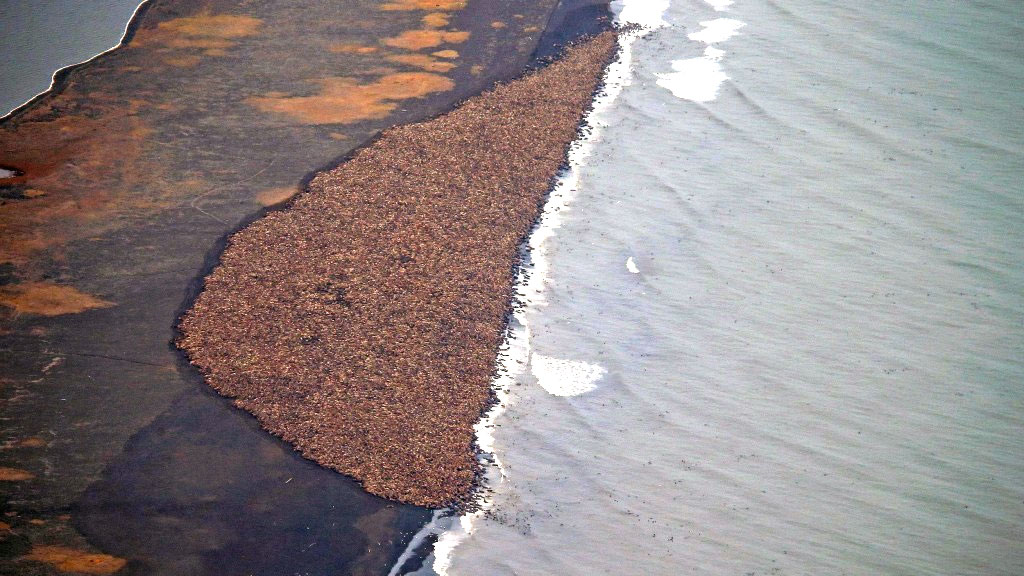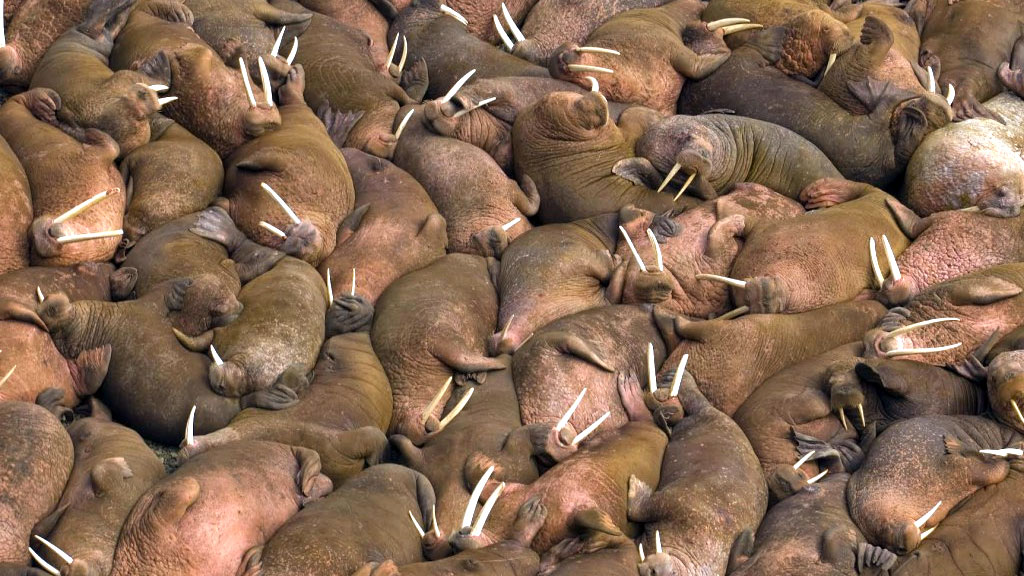It has become a familiar scene: polar bears dotting the tundra landscape awaiting the return of Arctic freeze during migration season. This year, however, the bears are not the only ones we can see affected by the loss of ice. Researchers from the National Oceanic and Atmospheric Administration (NOAA) were conducting their annual aerial survey of marine mammals this past September when researcher Corey Arrardo snapped a photo magnifying the impact ice loss has on Arctic species.

35,000 Stranded Walruses / Photo: Corey Arrardo
The photograph shows approximately 35,000 stranded walruses near Point Lay, Alaska. Polar bears and walruses both migrate with the ice as both species rely on it for survival; it gives them access to their primary food sources. Polar bears prefer ringed seals, whereas Pacific walruses dive into the chilling water to retrieve mollusks. Without a frozen surface to live on the walruses are face close quarters on land in northwest Alaska. They now compete against one another for resources, unable to relocate away from the herd. Walruses also have to expend more energy trying to find better feeding spots, negatively impacting their body condition. Also, stampedes are not uncommon. The lack of ice forces females to give birth on land and stampedes are particularly fatal to pups who also face hunting by opportunistic polar bears.
Margaret Williams, the managing director for the World Wildlife Fund’s Arctic Program puts it into perspective for the Guardian, “ The walruses are telling us what the polar bears have told us…and that is that the Arctic environment is changing extremely rapidly and it is time…to take action to address the root cause of climate change.”
Recently, the US Fish and Wildlife Service announced that there is enough evidence to take Pacific walruses into consideration for protection under the Endangered Species Act (ESA). The decision to list Pacific walruses as a “Threatened Species” would take place in 2017. If walruses are next in line to polar bears, themselves listed as a threatened species for the ESA in 2008, will the future of Earth’s ice-dwelling species melt away?



